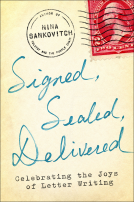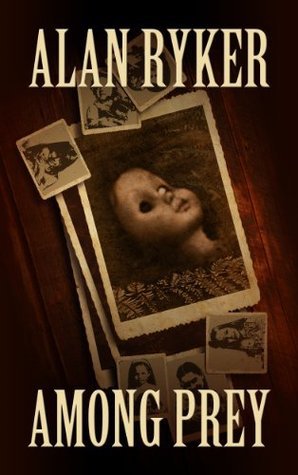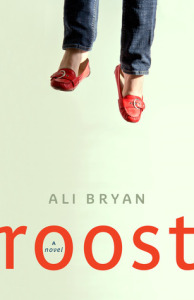
First published in April 2014.
Nina Sankovitch, author of the highly acclaimed memoir Tolstoy and the Purple Chair: My Year of Magic Reading, has decided to explore the art of corresponding by letter in her newest book. She has chosen to go ‘on a quest through the history of letters and her own personal correspondence to discover and celebrate what is special about the handwritten letter’.
It is utterly charming to write a book about something which seems, to the modern world, to be so quaint, particularly in an age when it is far more likely to type a quick email or contact friends through mediums like Facebook and Twitter, than to settle down with a pen and paper and send off the finished result in the more traditional way, envelope et al. Those who love to read letter collections – and there are, it seems, many of us scattered around the globe – are sure to find much of interest within Signed, Sealed, Delivered: Celebrating the Joys of Letter Writing.
Throughout, Sankovitch moves from letters written in ancient times, focusing upon those within Greece and Egypt, to the correspondence which exists between famous writers. We as readers are able to see how letter writing has adapted over time, to fit the changing world – from documenting love and expressing sorrow, to solving the most brutal of crimes and passing trivial notes at school. She begins her book with rather a sweet personal anecdote, of the moment at which her young son sent her his first letter: ‘He quickly covered an index card with blue marker squiggles, then carefully worked the card into an envelope. His face serious, he turned and handed me the envelope’. Sankovitch also writes of the importance of saving letters, believing that they are ‘the history of our lives made solid’, which ‘place us firmly within our history’.
Sankovitch’s writing style is lovely, and the warmth of her personality can be found in every page. The way in which she weaves in her own experiences of writing and receiving letters, and the delicious silence which comes between the two, works marvellously. An avid letter writer as a child, it seems as though she was spurred on to start writing Signed, Sealed, Delivered after unearthing ‘a trove of old letters’ from members of the Seligman family in the shed of her newly purchased house in New York. Throughout, she sets out the history of each family or person whom she discovers through the art of their correspondence, describing the ways in which the things that they wrote and sent reveal crucial elements about themselves and their personalities. She sees the importance in every scrap of letter which she encounters, believing that even the tiniest note has a story to tell. The structure which Sankovitch uses is not a chronological one, but one segment leads wonderfully to another, and the entirety feels well-rounded in consequence.
Sankovitch also portrays the way in which letter writing through history has been able to cross the boundaries set in place by society – to speak about forbidden relationships, and to converse with those of other races in the United States far before the advent of the Civil Rights Movement, for instance. The social history has been well written and considered, giving each letter and the story which goes with it a good grounding. The author brings fascinating people to the fore, and the aforementioned Seligman family are a fabulous example of this. One of the sons, James, whom Sankovitch is particularly fond of, is ‘a sweet and funny and affectionate correspondent’, who touchingly ‘wrote home almost daily’ when he was away.
Rather than becoming overdone in the stories it relates or its gushing love for letter writing, as could so easily have happened in the putting together of such a book, Sankovitch has created a work which is both far-reaching and concise. Signed, Sealed, Delivered is a lovely piece of praise for something which should be revived – the simple practice of writing letters, which surely means a lot more to its recipient than a hastily composed email or text message. Hopefully, Sankovitch will inspire far more people to correspond by traditional methods, and will help to bring back the popularity of something which has been so very important to our ancestors for millennia.
Purchase from the Book Depository
Advertisements Share this:





